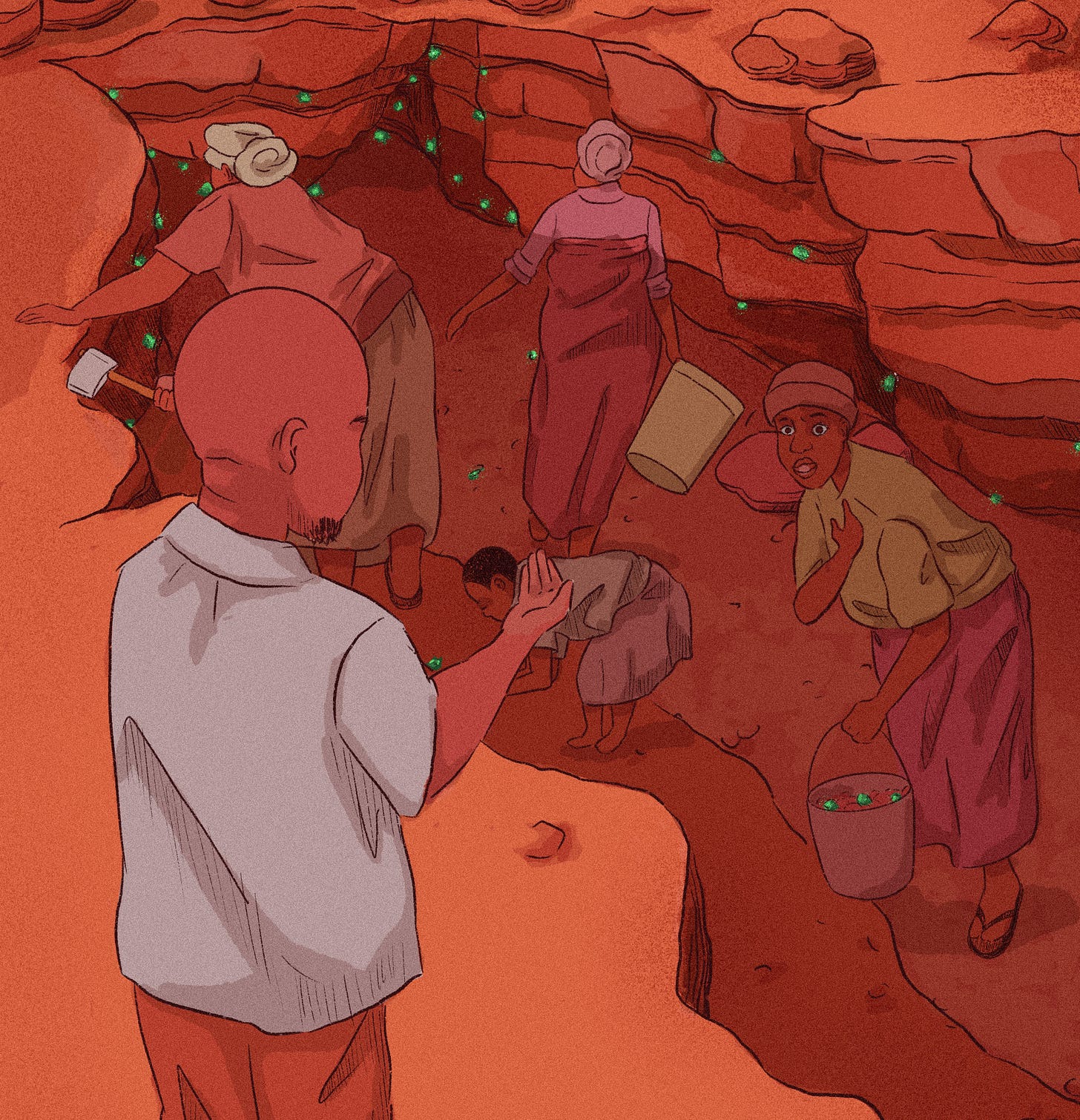Green gems, red flags
The wealth from Kenya’s rare tsavorite gems rarely goes to those who find them. Worse, the companies that exploit local miners often abuse them too.
Maureen Kasuku
The wealth from Kenya’s rare tsavorite gems rarely goes to those who find them. Worse, the companies that exploit local miners often abuse them too. Could the country’s shifting stance on artisanal mining change this old – and all too common – misfortune?
One evening two years ago, Kijala’s sister came home in tears from her work at a tsavorite mine in Taita-Taveta, in Kenya’s south west. “She told me that she had been forced into a room by one of her supervisors [and another man], where she was stripped to make sure she was not trying to smuggle any tsavorite stones through her private parts,” says Kijala.
After reporting the assault to the police, Kijala joined other family members to confront one of the men involved. It did not go well. “We were arrested,” Kijala tells The Continent. “They said we were trespassing.”
Working the tsavorite mines of Kenya’s Kasigau corridor should be lucrative. After all, just a single carat of the rare sparkly-green garnet gemstone – one fifth of a gram – can fetch up to $10,000 on the world market. In reality, the mines are both a lifeline and “a trap”, says Chao*, a woman in her mid-40s who has been a miner for 12 years now.
Chao spends weeks on end at the mine, leaving her children to be raised by her mother. Her earnings pay to keep them in a local secondary school and that is often enough to keep her going. But she also worries that paying school fees is not enough to make up for being an absent mother.
Emmanuel Kishushe, a community organiser in the tsavorite mining town of Voi, says the children of miners who spend months away are left vulnerable. “Many of them end up being preyed upon, and some drop out of school altogether.” Chao agrees and says her own children are struggling. “I’m scared they’ll end up working here at the mine. I’ve already seen children of some of the other miners join us.”
Wages from working at a tsavorite mine have helped Mwatela, a woman in her 20s, support her aging parents. But the work has taken a physical and psychological toll on her. “It’s very hard work,” she says. “Sometimes I go for days without bathing or brushing my teeth. I feel masculine working here. I’ve never been in a relationship with a man. I would like to get married someday.”
Despite these fears, Chao and Mwatela, like hundreds of others in Kasigau, cannot simply walk away from mining for tsavorites. History left them few other options.
What’s mined is ours
Kasigau, their homeland, lies right at Kenya’s border with Tanzania, which was a German colony from the 1880s. In 1915, Kenya’s British colonisers exiled people from the area, accusing them of aiding German World War I forces. When they returned in 1936, the land had been labelled “Crown Land”. At independence, it was passed on to the Kenyan government as public land. The government went on to parcel much of it out to private wildlife conservancies.
Prevented from farming the land around them, many descendants of the 1915 exiles turned to mining once tsavorites were discovered in the area in the 1970s. They keep doing it because “it feeds our families,” says Charity Mwagogo.
But Mwagogo is doing it a bit differently from women like Kijala’s sister. She is not mining as a company employee but as part of a local collective of artisanal miners: Nyangala Cooperative. Chao recently registered to be part of the collective too.
Collectives like Nyangala are helping Kenyan miners in Kasigau and elsewhere to find a middle ground between walking away from economic opportunity and taking abuse from cut-throat companies.
There are 140,000 Kenyan miners who have chosen to do it themselves rather than work for companies, and this shift has given them a chance at collective recognition and formal recognition
Kenyan authorities have also opened up to this middle ground, decriminalising artisanal mining – often called illegal mining elsewhere – in October 2023. There are 140,000 Kenyan miners who have chosen to do it themselves rather than work for companies, and this shift has given them a chance at collective recognition and formal recognition.
The government wins too, especially if it can begin to collect taxes from the artisanal mining industry, which is worth an estimated $224-million.




